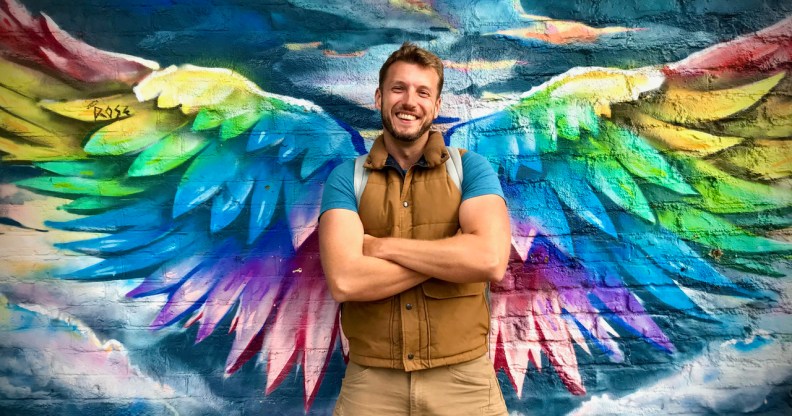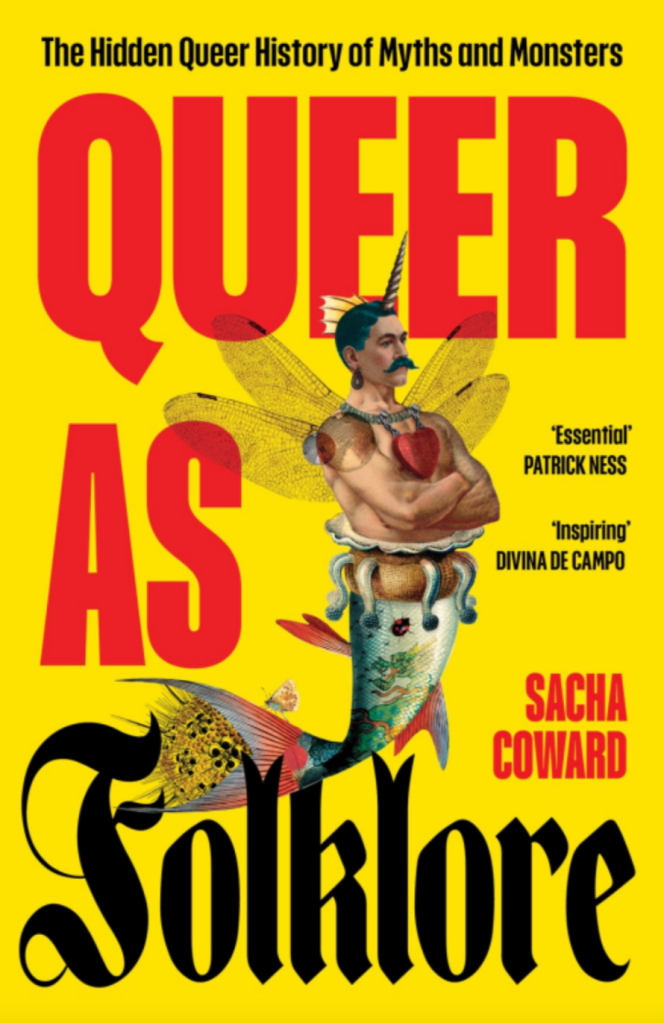‘LGBTQ+ people haven’t borrowed the symbols of myths and legends – we are woven into them’

Queer as Folklore, by Sacha Coward, is the exploration of LGBTQ+ history (Provided)
Author Sacha Coward is taking readers across centuries and continents, to reveal the unsung heroes and villains of storytelling, magic and fantasy in Queer as Folklore.
To truly understand who queer people are today, we must confront the twisted tales of the past, and Coward’s Queer as Folklore is a unique celebration of queer history.
The book is the first from Coward, who has worked in museums and at heritage sites for 15 years, running tours focused on LGBTQ+ history.
Readers will go from Ancient Greece to the main stage of RuPaul’s Drag Race, visiting cross-dressing pirates, radical fairies and the graves of the “queerly departed” along the way.

Here is Queer as Folklore‘s introduction, exclusive to PinkNews:
Transport yourself to a Pride parade in any major city in the world. Consider the costumes you might see. Among the glitter and feathers, tank tops and hoodies, tiaras and Doc Martens, certain themes might recur. Whether in Paris, Rio, Tokyo or Sydney, you will see papier-mâché unicorn heads trailing sequins, drag queens wearing mermaid tails, and more fairy wings and cat ears than you can shake a trident at.
To be clear, having a love for magic, mythical creatures and folklore is not something unique or specific to the LGBTQ+ community. Still, I would argue that the extent and depth of this goes beyond the status quo. From the language we use, both flattering and derogatory – fairy, bear, wolf, unicorn – to the iconography used by LGBTQ+ charities and groups, there is something going on here. More than meets the eye.
This book was written to explore this, unpack this, and to make a statement. That statement is that we haven’t just borrowed these symbols or co-opted them: we are woven into them.
The bedtime stories of mermaids, vampires and fairies that many of us grew up loving were often created – or contain monsters and characters that were inspired – by people who had similar lives and loves to the lesbian, gay, bisexual and transgender people living today.
These are stories that echo back hundreds, even thousands of years. The monsters and heroes we dress up as, the designs we tattoo our bodies with and the niche areas of academia we tend to throw ourselves into, are no accident or mere quirk. In fact, to truly understand who queer people are today involves an adventure into the fantastical stories of our past.
As a museum worker, for me this started with artefacts: collections and paintings from museums and galleries around the world. But it soon took me away to some bizarre and surprising places: ancient temples of Syria, the HIV crisis in New York, the origin stories of superheroes, alien abductions, demonology textbooks and the satanic panic of the 1980s, just to name a few.
This is going to be a wild ride through the night: monster by monster, myth by myth. There will be tales of bloodthirsty fairies, Victorian melodrama, burned love letters and flamboyant drag queens.
It’s not always a happy place. If you know anything about LGBTQ+ history this will come as no surprise. These are too often stories of unfair and cruel treatment, unspoken love, unseen people, occasionally even death and torture. The histories contained within this book hold a lot of power and often tackle subjects that are sensitive and complex. Rather than adding content warnings for individual chapters, which may detract from the words or serve as unnecessary labels, I would ask readers to be conscious that some content may be hard to read and potentially distressing.
This includes some references to assault, abuse, underage or non-consensual sex, and sexual violence. Despite this, for the most part, these are stories of people just getting on with their lives, showing remarkable resilience, wit, creativity and joy in places that might seem otherwise unforgiving.
It is a deeply human story, despite focusing largely on inhuman monsters. I hope that non-LGBTQ+ people find a sense of meaning also. You are welcome here. Queer history is everyone’s history.
Once upon a time…
Queer as Folklore is published on 22 August, and is available to pre-order now from Unbound and Amazon.
Share your thoughts! Let us know in the comments below, and remember to keep the conversation respectful.
How did this story make you feel?

